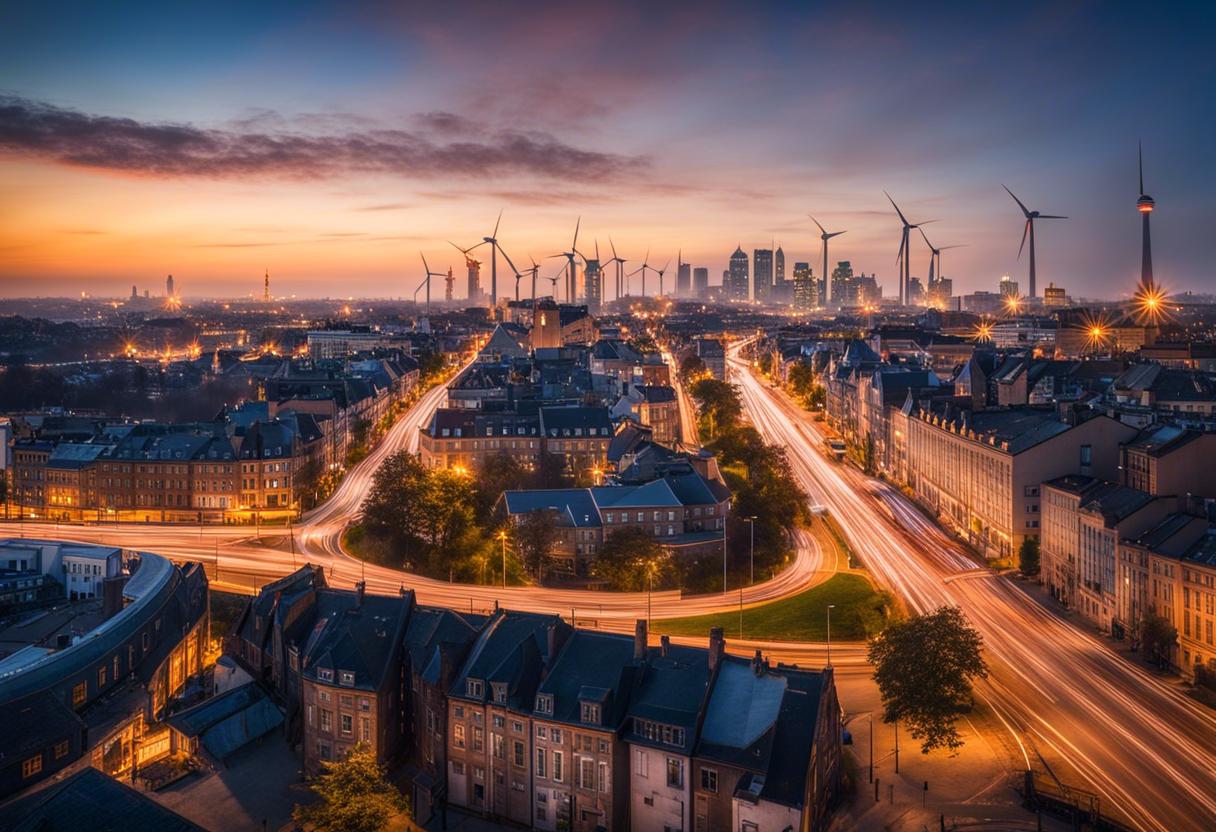Keith McGrane, the joint founder and CEO of Corre Energy, a firm specialising in the storage of renewable energy, chose an opportune moment to take the company public in September 2021. At this time, worldwide stock markets were surging, and there was a historically high number of initial public offerings worldwide. Furthermore, shares in companies involved in the green transition field were popular, fuelled by fears about climate change and fluctuations in energy costs.
McGrane, whose background is in the fields of geology, renewable development, and finance, held steadfast in his belief about the type of investor required for Corre Energy’s public offering – namely, those willing to take risks, be patient and invest in the management team’s capacity to execute the business plan.
The main challenge Corre Energy is tackling is achieving regularity of supply for renewable energy – i.e., sustaining power supply even when environmental conditions are not favourable. The company believes the solution lies in large-scale, long-duration energy storage, which can address the sporadic nature of renewable energy sources.
One of the most mature projects that Corre is working on is the pioneering Zuidwending (ZW1) project situated in the Groningen province of the Netherlands. It is the first major compressed air energy storage (CAES) facility to be built in Europe in nearly half a century. This allows surplus energy to be transformed into compressed air and stored in subterranean salt chambers. ZW1, once operational, will have the capacity to supply as much as 320MW of electricity to the national grid for a duration of up to three and a half days, although it is not expected to be fully operational until the end of 2026.
McGrane and his team are also working on additional projects, including the 320MW Green Hydrogen Hub project in Denmark, a second facility at Zuidwending (ZW2), and the proposed construction of three CAES plants in Germany on the back of agreements signed last year. The German projects could potentially produce a total of 500MW of electricity, which equates to approximately 9% of peak demand in the Republic at current rates. Corre has also recently entered the US market with the signing of a Texas-based deal providing an option to acquire a 280MW CAES project.
Corre, a Netherlands-based company whose shares are listed in Dublin, saw a dramatic 300% rise in its shares within the first 18 months of trading, reaching €4 each. The company’s progression was accelerated by the heightened importance of energy security brought about by Russia’s invasion of Ukraine, under President Vladimir Putin. Despite this, Corre has struggled to maintain investor value, with its shares dropping by more than 80% from their peak in February 2023.
This decline is not unique to Corre, however. The S&P Global Clean Energy Index, which covers renewable energy businesses, wind turbine manufacturers and solar panel producers, has fallen by nearly 25% in the last 12 months. This drop can be attributed to a decrease in energy prices and the impact of high interest rates on this capital-heavy industry. In contrast, the FTSE All-World Index has risen by around 25% over the same period.
Corre’s situation hasn’t been helped by some company-specific issues. Although the company has managed to meet its large-scale project development goals, it has yet to clearly communicate its expected profits from these undertakings.
Investors are particularly concerned about the ZW1 project, which achieved commercial close in the first half of the previous year after reaching certain milestones. These included securing an offtake agreement with Dutch gas and electricity provider, Eneco. Despite securing funding from investment firm Infracapital (a subsidiary of M&G plc), with the firm set to gain a majority stake once all financial agreements are finalised, investors remain largely in the dark about this project.
Last September, Corre stated that it intended to secure funding for its principal projects by the end of 2023, mentioning ongoing discussions about co-investment on projects including the ZW1, Danish GHH1, and initial German projects. The company promised detailed terms would be revealed in early 2024. However, investors continue to await this information.
In a recent declaration, the unnamed partner was not credited in the Danish factory off-take agreement that was moving toward a trade closure. A report at the end of January, which regarded Corre’s premier German venture, showed that Eneco was set to obtain power from the facility and secure 50% interest. Oddly, the fiscal terms remain unresolved.
Just last month, Corre’s shares suffered a further blow, dropping below its €1 IPO price for the first time when Darren Patrick Green, the company’s founding director and significant shareowner, resigned as an executive director. The resignation followed as a Singaporean company he entirely owned was highlighted by the UK tax bodies in relation to a supposed tax-dodging scheme. After learning of the news, an astounded Green strongly asserted that he had not been an active part of the company for a considerable duration.
He reaffirmed his dedication to maintaining the 38% share he currently holds in Corre. However, the market sees this as a burden. A major rally took place this week as Corre’s shares gained as high as 37% from record low of 60 cents.
This rally came after the company announced it had received several signs of interest from anonymous industrial, strategic, and institutional firms willing to invest. Analyst Michael Mitchell with Davy suggested that thiscaught the eye of probable contenders including Eneco, Infracapital, and Siemens whose technology has been incorporated into Corre’s ventures.
Despite the rally, Corre’s value in the market remains at a mere €60 million, just a fraction of the expected average €100 million that market analysts predict Corre could receive from the sale of 50% of just one of its seven active projects. Current market sentiment does not hold much expectation for a deal being finalised.

